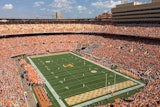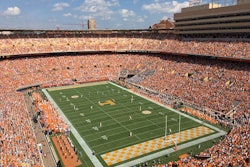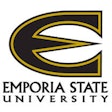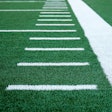Game-worn football faceshields - protective gear affixed to a helmet's facemask to guard against eye injuries and glare - are more susceptible to breaking than new ones when subjected to high-velocity impact, according to new research at The Ohio State University. In the study, researchers used an air cannon to hurl baseballs at new and used polycarbonate faceshields. All new shields withstood the strongest impact tested, which was designed to match the force of a kick to the face, but more than a third of the game-worn faceshields fractured during testing.
In a related survey of college football equipment managers, OSU researchers found that 98 percent of football programs allow faceshield use, while only 18 percent of the players wear a shield. Of the programs that responded, 21 percent require the use of a faceshield for players with poor vision in one eye, and half reported that their school had established a replacement policy for faceshields.
This combination of findings led OSU scientists to recommend that intercollegiate football programs develop a policy for routine inspection and replacement of used faceshields, adding that coaches or trainers should strongly recommend football players with poor vision in one eye wear a faceshield during all practices and games. Because amblyopia, a common vision disorder known as lazy eye, originates in the area of the brain that controls vision, loss of vision in the affected eye can become permanent if it is not treated before age 8, according to the National Eye Institute.
"Any football player who has a vision problem should consider wearing a faceshield," says Aaron Zimmerman, assistant professor of optometry at Ohio State and lead author of the study, whose research was published in a recent issue of the journal Optometry. "Something could happen to their good eye. Why take a chance, especially if there's a way to prevent that?"
In the study, researchers sought to determine how the faceshields performed after the rigors of standard football action, as well as exposure to sun or freezing temperatures. The group also sent a survey to equipment managers at 117 NCAA Football Bowl Subdivision programs and received a 50 percent response rate.
For the structural-integrity tests, a baseball was used to mimic the hardness and curvature of a fist or the toe end of a cleat. The scientists tested the two most popular collegiate and professional football helmet faceshields by manufacturers Oakley and Nike; the game-worn shields were donated by two football programs. Impact resistance was tested at five velocities ranging from 116 miles per hour to almost 150 miles per hour. At the highest velocity, 10 used faceshields fractured, three shields broke at the middle-range velocities and one shield broke at the lowest velocity.
Zimmerman and his colleagues also subjected 24 new faceshields to sunlight for an average of 3.5 hours per day and five days per week for 10 weeks to mimic exposure to ultraviolet radiation during a football season. Previous research suggested that solar radiation can weaken polycarbonate, but none of these shields broke when impact-tested at velocities of 150 miles per hour. In a small sample of game-worn faceshields exposed to freezing temperatures of 14 degrees Fahrenheit for one hour, four of five used shields broke when tested at velocities of about 130 miles per hour.
Many of the shields that fractured showed the most stress on the sides, where the faceshield attaches to the helmet. But a few shattered into multiple pieces that had potential to tear the retina or even penetrate the eye. "Based on the results, we felt that multiple impacts to shields were probably the likely cause for the lower resistance to impact over time," Zimmerman says, adding that no universal guidelines exist for inspecting and replacing faceshields. "No matter what the cause is, you do not want to have a protective device fail and potentially cause a more severe injury."
Faceshields have been recommended for younger football players for more than a decade. The sports safety committees of the American Academy of Pediatrics and the American Academy of Ophthalmology issued a report in 1996 recommending that football helmets be equipped with a polycarbonate faceshield for face and eye protection. They were responding to a 1993 report by Prevent Blindness America, which indicated that football was the fifth-greatest contributor to sports-related eye injuries in patients younger than 25. "Once a week, the shields should be inspected, particularly where they fasten to the helmet," Zimmerman suggests. "But players should be encouraged to glance a faceshield over before each practice and game. And if there's a deep scratch or crack present, it definitely needs to be replaced."
In related used football equipment news, the National Athletic Equipment Reconditioners Association announced in March that it will no longer accept helmets for reconditioning or recertification that are more than 10 years old. The new policy will take effect Sept. 1 for the 2012 football season.




































